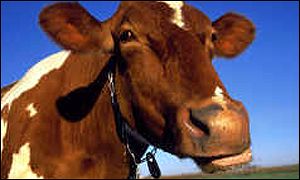In a minute

see more dog pictures
Young love

more cat pictures
Basic Criteria for Choosing Your Fashion Design School
School, obviously, is the one main vehicle where you can acquire basic and formal training. This is true to all fields and industries. And as such, the fashion industry does not escape this reality.
You may have the talent and the unique sense for fashion but without structured training, you might fail to understand and explore more on your gifts.
Besides, one’s success in the field of fashion relies partly on your choice of school. In this article, we will give you the basic criteria you can use in exploring your options of fashion design school.
Cost- This is one of the main considerations that largely affect your choice of school. The sad truth with fashion design schools is that they are too few and among the relatively small number are the handful schools that can truly deliver efficient education.
As with many other things, low cost fashion design schools are good but only if they can give effective learning. This is rarely the case though. Often, with lower fees, lower quality of education may be had. This is due primarily to the reason that such schools can’t afford higher paying professionals to provide them with man power. Thus, they settle for people who can give service at a low price. Don’t let quality suffer over the limit of your budget. There will always be some well-performing fashion design schools that will suit your means.
Area of Specialization- In the fashion industry, it is well recognized that one should have special fields where they are greatly inclined to. This must be triggered or further supplemented by the fashion school of your choice.
The first thing you would want to do is to study the nature of the fashion design school. What fields does it cater? What courses does it focus on? What are their main emphases in delivering the art? These are among the many things that you should give intense consideration since the fashion design school that you will be choosing would largely influence your career later.
The best aid for your choice of school is to know its reputation. A self respecting fashion design school is one that makes itself renowned in the world of fashion. Does your school of consideration participate in fashion school competitions? This would be a sure mark of fostering excellence in the industry and the school’s commitment for brilliant education.
To maximize your strength, you must therefore find a school that focuses on your own field of specialization.
Considerations on the Curriculum- As with college education, you must also check into the curriculum offered in the school of fashion design. To get the best offered in your spectrum of choices, you can compare curriculum from various schools and decide what you think would best fit in your preferences.
Ratio of teacher to students- The size of a class against a teacher means two things- the school is either too popular or it’s the other way around. Nevertheless, the larger the size of the class the more likely would education suffer. It is often better to choose between schools of relatively fewer students since this will normally have the implication of focusing better on the students.
These are only some of the major points to consider in choosing your fashion design school. As for your final decision, your best judgment must out rule any doubt.
What You Can Get From Fashion Designing Schools
Talent and education combined are the most secured foundation you can lay on in your pursue of career in the fashion industry.
Your talent is there, no doubt about that. But a free moving talent has lesser significance against that which was properly oriented to the fundamentals of channeling that talent into workable art.
The majority of fashion designers find great worth in attending fashion designing schools. Such schools would not only supplement them with the proper and structured knowledge but will also help them expand their basic skills through applied art. The curriculums offered in fashion designing schools are specifically designed to stimulate the interests of the students. Additionally, the curriculums offered in fashion designing schools would stabilize the groundwork for improving the innate talents young fashion designers have.
Normally, training programs in fashion designing schools are created ideally to put challenge on the students by integrating both theoretical and technical means of learning to produce creative and artistic designs. Sensible approaches are also introduced to the artists to change and innovate fashion trends that are apt for various present requirements.
Fashion designing schools exist primarily because both the greats and to-be greats acknowledge the worth of sending themselves into formal trainings so as to equip them with the knowledge and learning they need. It is not enough for you to know how to produce your fashion creations, you must also take responsibility in grooming yourself.
Fashion designing is not just about fame or being recognized by Hollywood. It is not also only about making money out of your skills. It also deals with the expression of art’s beauty in your creative outputs- in the items you make and in the justifications you give to the art.
As for those who are trying to find their veins in the fashion industry, entering into fashion designing schools is the best way to orient themselves with the basic instructions on pattern and clothes making, body measurements and sewing.
While it is true that a couple of people in the industry undergone no formal training, we still can’t ignore the basic truth that those who schooled themselves with the art fare much better than those who bargain on talent and skills alone.
Attending in a fashion designing school would not only pave your way towards creativity and artistry, it would also lay a path for you to achieve great in the fashion industry. For one, the instructors in many well-renowned fashion schools have the access to influences that could intensely increase the likelihood for you to make a name in the field. An education in a fashion school can practically increase your credibility and reputation when seeking employment. This then will inevitably open wider options for you to take higher roads towards success and fame.
Since the beginning of industry, some people have already initiated to create a formal environment to hone artists. But these back then were often dismissed and laughed at. Recently though, many were encouraged to enter such schools for the refinement of their talents and skills. Thus, we can see the products in the field now.
If you want to venture on the professional world of fashion designing, these schools are one of the best alleys you can take. These are not your absolute answers to career but they are sure to help you find your own niche and special interests.
High Heels, High Hopes, and the Role of Fashion Design Schools
The fashion world has long been filled with glitz and glamour. The ramp for models is always long, dramatic, and well-lighted. The walk is certainly a walk for fame, fortunately for aspirants but sometimes leading to a walk for shame. Who is behind all these promises and/or even breakdowns? No less than the fashion designers.
What, exactly, does a fashion designer do?
Basically, with streaks of talent, creativity, and sensitivity, fashion designers, as if influenced by Rumpelstiltskin, craft accessory and clothing sketches. They usually concentrate in one nature of accessory or garment such as women’s or men’s apparels, swimwear, lingerie, children’s garments, handbags, and even shoes. They, sometimes, lead the groundwork of the creation and promotion of their creations.
Famous fashion designers prefer to be self-employed and they cater for the request of their clients. Some cater to high-fashion department stores or to specialty stores. They establish fashion statements by setting the colors, silhouette, and type of materials that are worn each season.
There are also some designers who are employed by manufacturers of clothes. These designers just adapt fashion statements set by other designers for the market. However, there are small manufacturers who just purchase or copy designs.
Both designers sketch unique garments and follow certain trends in fashion. Likewise, both need assistants who should get used to the fast-paced schedule of the fashion business.
In detail, these designers execute the following tasks:
• Draw their unique designs.
• Create patterns for sample garments.
• Choose textile and add-ons (accessories).
• Apply tailoring and basic dressmaking principles along with draping techniques and flat pattern works.
• Fit and alter the completed product, if necessary.
• Set-up a fashion show.
• Compare the performance of the merchandise against the competitors.
• Keep self up-to-date of latest fashion trends thru magazines and other fashion shows.
• Have frequent trips to fabric showrooms to keep self updated of latest type of fabrics.
Actually, fashion designers can be categorized as follows:
1. Lead or Head Designers
They take care of the executive and creative tasks.
2. Assistant or Apprentice Designers
They usually make patterns and sample garments. They may also teach sample makers how to make patterns and designer garments.
3. Specialty Designers
They coordinate with other designers about special lines of garments.
4. Costume or Theatrical Designers
They usually create costumes used in theater and movie productions on a contractual basis.
The foundations for their creations are their knowledge, skills, and abilities honed in fashion schools and trainings in the long run.
• Basic Design – This refers to technical know-how included in the creation and use of technical blueprints, drawings, plans, and models.
• Idea Production – This is the ability of designers to approach problems creatively and resourcefully.
• Dynamic Learning – This is being able to analyze implications of new information and materials at hand.
• Operations Scrutiny – This is considering requirements of products to execute a design.
• Uniqueness – This pertains to unusual cleverness vis-à-vis trying situations.
• Harmonization – This is being able to having good coordination with others.
• Visioning – This is being able to see how an organization works under real conditions.
The talents and skills of these artists are really important in the fashion industry. The work requires an eye for a striking creation and business management. Thus, aside from the portfolio of their usually creations, formal education help these designers acquire the secrets of the trade in this business. In fact, graduation from a college or school that provides training on fashion and design is highly recommended in the industry, to keep incoming designers updated on the advent of new techniques and technologies.
However, some leaders of this industry view vocational training schools and community college as more capable of producing competent artists because these institutions work along with clothing industries.
Vocational schools provide trainings in sketching, draping and grading, pattern making, garment construction, textiles and trimmings, costume history, principles of design and color; and how to plan and market seasonal fashion lines.
High school students inclined in fashion and design should finish basic courses in arts, sewing, mathematics, speech, English, and business.
Usually, vocational institutions provide a two-leveled program with certificate that is consonant to the degree in Associate of Arts. For those who want to enter the fashion field immediately, a first level certificate of proficiency is provided. The next level of proficiency, the second-level requires a greater time of completion. But upon graduation, artists are considered competent enough to aim for positions as Assistant Designers. After all the necessary formal trainings and specializations, those who have the guts and high hopes spin gold fabrics!




